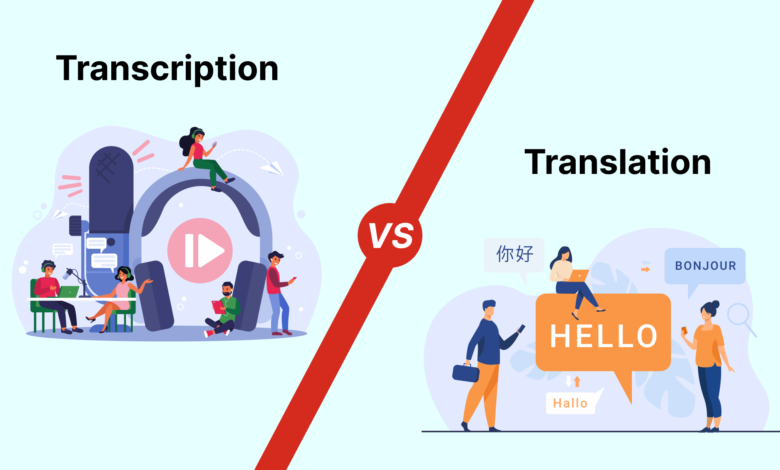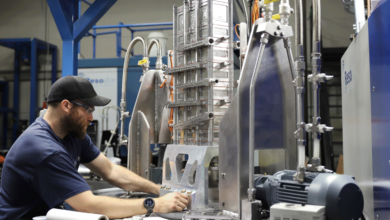Transcription and Translation for Global Success

Business today is done at a pace one could not imagine ten years ago. You may attend a virtual meeting with a team in Singapore one morning, and then spend the afternoon completing a deal with a London partner. Moreover, there may be a marketing presentation landing in a client’s inbox in a language they are not not fluent in. In all these situations, clear communication is vital. It makes the difference between winning and missing an opportunity.
To stay ahead, businesses require more than good ideas. They require a method of making good ideas understandable, wherever and however they’re communicated. That is where transcription and translation can be of great value.
Why Clear Communication Wins in Global Markets
In the global market, clarity builds trust. A great product or service can lose its shine if people can’t understand the details. An investor call can go sideways if a single term is misheard. A training session can fail to deliver if the content doesn’t land in the right language.
Global success depends on two skills: listening accurately and speaking effectively. Transcription helps with the first by turning speech into reliable text. Translation handles the second, transforming that text into a version that works for the intended audience. Without both, companies risk falling into the gap between what was meant and what was understood.
The Practical Power of Transcription
Once a call is completed, the decisions made in it shouldn’t be lost. A good transcript keeps the precise words intact, making them accessible to reference. Having it written down allows teams to review agreements, prevent miscommunication, and verify that they’re following industry codes. A transcript can be translated at a later time, allowing non-native speakers an opportunity to glance over the same data without losing context. Here the conference call transcription agency proves its worth. Handling multi-speaker calls, especially those with varying accents or patchy audio, requires skill and attention. Such agencies ensure that no critical detail is lost, whether it’s for a legal deposition, a financial strategy meeting, or a healthcare compliance discussion.
Translation: Beyond Word Swapping
Translating business material is not about replacing one word with another. It’s about carrying meaning, tone, and cultural context from one language to another. A technical manual needs precise, regulation-compliant wording. A marketing brochure needs a style that feels local to the reader. These tasks demand more than language fluency; they call for cultural intelligence and subject expertise. Here, taking the assistance of any company for translation services can change the impact of your message and make it resonate with the culture. These companies combine skilled native speakers with industry knowledge, ensuring translations are accurate and feel native.
How the Two Services Work Hand in Hand
In many cases, transcription and translation are steps in a single process. Imagine this, A global sales team holds a product launch meeting over video call. The recording is sent for transcription. That transcript is then translated into multiple languages for regional offices.
This sequence provides a reliable reference. It’s cleaner than depending on memory and safer than relying solely on real-time interpretation, which can miss subtle points.
The Cost of Getting It Wrong
Mistranslation isn’t just embarrassing, it can be expensive. A single incorrect figure in a contract could derail negotiations. A poorly worded instruction in a product manual could cause safety hazards. On the transcription side, missing a key statement in a recorded meeting could mean losing evidence in a legal case.
Accurate services, on the other hand, help companies:
- Build trust with clients and partners.
- Speed up strategic decision making.
- Maintain compliance across jurisdictions.
- Open doors to markets they couldn’t reach before.
Going for a Hybrid Approach
Speech recognition technology and machine translation services have made great strides. They can digest large amounts of content in minutes. But speed is not all that matters. Background noise, colloquialisms, and technical jargon can still catch out automated tools.
That’s where human experts come in. An experienced transcriber will notice when a word just doesn’t sound right. A good translator can select wording that sounds natural to the target language. The optimal result typically lies in combining both: technology for speed, humans for subtlety.
Choosing the Right Partner
Selecting a provider should go beyond asking about price. Look at how they handle quality control, their track record in your industry, and their approach to security especially if you deal with sensitive information.. A reputable conference call transcription agency that also partners with skilled translators can be a game changer, ensuring both your spoken and written communications are handled with precision from start to finish.
Strong partners typically offer:
- Native-speaking professionals with subject matter expertise.
- A structured review process for accuracy.
- Secure systems for handling files.
- Proven reliability in meeting deadlines.
Conclusion
With the economy of today being an interconnected one, speaking several languages confidently is not an afterthought but a growth plan. Transcription locks the word on the page so that no detail is lost. Translation makes these words applicable on the other side. Choosing to work with the best translation company means that this is done with precision and cultural awareness. As a team, they close the gaps of language, distance, and culture. The companies that invest in both are more likely to earn trust, expand into new markets, and maintain a professional edge no matter where the dialogue starts.




